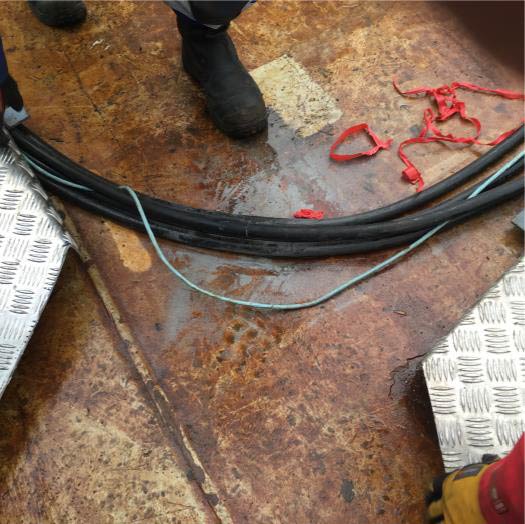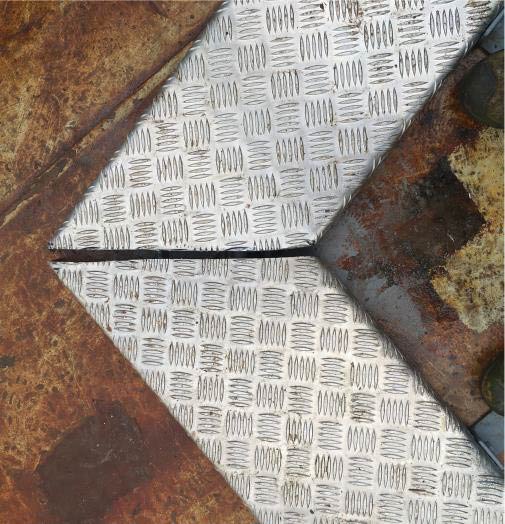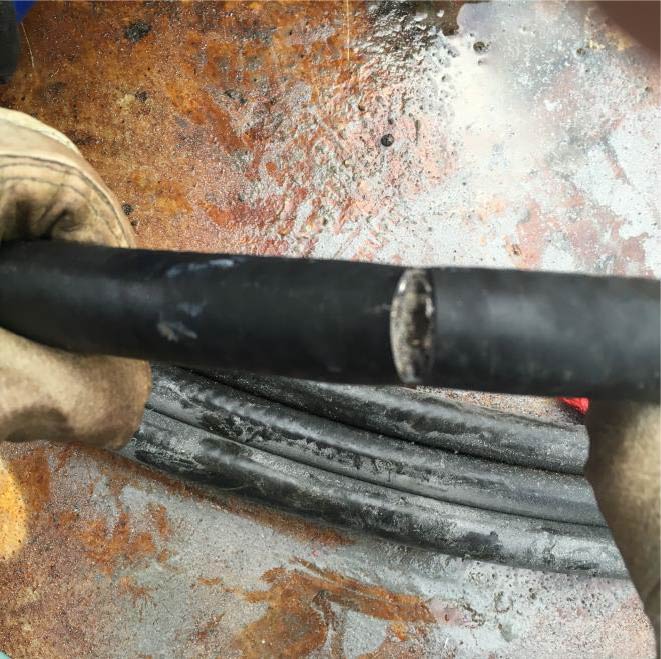- Discover how we are helping Members reduce emissions: Explore the ProjectGHG hub now.
- Join the global DP Community at the IMCA DP Conference in Amsterdam. 21 and 22 May. Book now
- Register your interest for the IMCA Global Summit 2024. 3-4 December, Utrecht, Netherlands.
- Now booking. Underwater Ship Husbandry Seminar. 10 October 2024, Singapore.
High potential near-miss incident: 440v cable damaged by grinder
A member has reported an incident in which live 440v cables were damaged by a grinder. The incident occurred during a vessel mobilisation, when a rigger/welder was tasked with fitting cable protection covers over a bundle of 4 x cables which had been run across the aft deck. They were routed across the deck from the on-board Reel Drive System. Rubber cable protection covers had originally been fixed in place, but these fixings had dislodged. The rigger/welder advised that more robust covers could be fabricated (out of aluminium), which he proceeded to do in a designated hot work area. Whilst the vessel was alongside, the rigger/welder proceeded to install the newly fabricated covers.
During this time the angle on the covers had to be altered so they would neatly butt up against each other. On several occasions the rigger/welder removed the covers to a more suitable location on deck to modify or improve the fit. On the last modification the cable protection covers were left in place and the rigger/welder proceeded to grind over the bundle of cables, making contact with the live 440v, 250A cable.



When he realised that cable had been damaged, the rigger/welder immediately stopped the job and applied insulating tape to the cable, to prevent any ingress from the damp conditions. He was not aware that the cable was live. He then reported the incident. Around two hours later, the power to the damaged cable was isolated at the supplying junction box and a pad-lock put in place as a lock-out mechanism, as per company procedures.
Our member’s initial investigation revealed the following:
- The task was not properly planned or risk assessed:
- The Permit to Work did not cover this specific task (it covered Hot Work/Welding/Grinding only)
- The Job Risk Assessment (JRA) did not cover grinding in vicinity of live electric cables or the requirement for electrical isolations of the cables;
- The toolbox talk was not specific to the task being undertaken by the rigger/welder;
- There were no isolations in place whilst working next to live electric cables;
- Electrical isolation was not applied immediately after the incident, and did not occur until 2.5 hours later, posing further risks to other crew members working on deck/in the vicinity.
Members may wish to refer to the following incidents (search word: electrical):
Safety Event
Published: 3 October 2016
Download: IMCA SF 25/16
IMCA Safety Flashes
Submit a Report
IMCA Safety Flashes summarise key safety matters and incidents, allowing lessons to be more easily learnt for the benefit of all. The effectiveness of the IMCA Safety Flash system depends on Members sharing information and so avoiding repeat incidents. Please consider adding [email protected] to your internal distribution list for safety alerts or manually submitting information on incidents you consider may be relevant. All information is anonymised or sanitised, as appropriate.
IMCA’s store terms and conditions (https://www.imca-int.com/legal-notices/terms/) apply to all downloads from IMCA’s website, including this document.
IMCA makes every effort to ensure the accuracy and reliability of the data contained in the documents it publishes, but IMCA shall not be liable for any guidance and/or recommendation and/or statement herein contained. The information contained in this document does not fulfil or replace any individual’s or Member's legal, regulatory or other duties or obligations in respect of their operations. Individuals and Members remain solely responsible for the safe, lawful and proper conduct of their operations.
